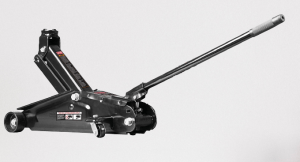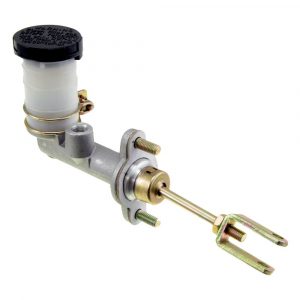Are you facing a problem driving because your car’s clutch is not completely disengaging? Does your vehicle creep forward even when the clutch pedal is depressed? If your answer is yes, then you should know that you have a problem. Driving with the clutch not fully disengaging can cause damage to the clutch plate and wear it out faster. The car creeping forward at an inopportune moment could lead to bumps and scrapes or even a major accident.

Troubleshooting the issue might seem like a huge task worthy of magicians. However, the clutch is a simple mechanical or hydraulic-mechanical machine element. Once you understand the function of the parts and how they interact, it is an easy job to find out the problem with your clutch.
Table of Contents
What Does The Clutch Do? How Does It Work?
In the case of a manual transmission, the clutch transmits the torque from the engine to the propeller shaft, via the gearbox. When the car moves under power, the clutch remains fully engaged. The other purpose of the clutch is to disengage the engine from the drivetrain when braking, or changing gears (downshifting or upshifting).

A pressure plate bolted to the flywheel presses the clutch plate down onto the flywheel surface during regular operation. The high friction material on the clutch plate causes the drivetrain to rotate with the engine crankshaft. When the clutch pedal is depressed, a diaphragm spring lifts the clutch plate from the flywheel surface. Thus, the clutch is disengaged, disconnecting the engine from the rest of the drivetrain.

What Happens If The Clutch Isn’t Fixed?
With the clutch not fully disengaging, the clutch plate remains in contact with the flywheel of the engines. Due to the constant slippage of the clutch plate, the heat build-up and the frictional forces slowly degrade the high-friction material on the clutch plate. Ultimately, the friction material will burn out. The clutch release bearing will seize and fail. As a result, the power transmission capability of the clutch deteriorates and the car’s acceleration is affected.
Since the clutch remains incompletely disengaged, the vehicle will creep forward even with the clutch pedal fully depressed. This could lead from minor scrapes and bumps up to major accidents due to the car moving at the wrong time.
How To Troubleshoot The Clutch Not Fully Disengaging?
Before the issue can be fixed, we need to identify why it is happening. Follow the steps given below.
What Could Have Caused A Faulty Clutch?
A multitude of reasons could be causing the problem.
1. Possible Causes For Sudden Failure:
- Broken or loose clutch cable

- Broken or loose linkage
- Failure of the hydraulic master or slave cylinder
- Leakage in the hydraulic line
- The incorrect fit of throwout bearing with the pressure plate
- Contamination of the Clutch Disc by foreign material
2. In Case Of Gradual Failure:
- Stretched clutch cable
- Bent linkage
- Over tightened pressure plate
- Failing master/slave cylinder
- Low hydraulic fluid
- Broken motor/transmission mount
How To Identify The Cause?
To inspect the transmission or the clutch, some effort is needed since it is not accessible from the interior of the car. At first, the car needs to be hoisted up. Then the transmission can be inspected from below the car.
Materials Required For This Purpose:
- Creeper

- Flashlight
- Jack
- Jack stands
- SAE/metric socket and wrench set
- Safety glasses
- Wheel chocks

Preparing The Vehicle For Inspection
- Park the car (or another vehicle) on a plain horizontal surface. Put the car in 1st gear so that it doesn’t roll. After that, place the wheel chocks around the rear wheel that stays on the ground.
- Use the recommended floor jack (as per the weight of your vehicle) at the designated jack points to raise the vehicle until the front wheels are off the ground. In the case of most modern cars, the jacking points for jack stands are going to be on the pinch weld just under the doors along the bottom of the car.

- Place the jack stands under the jacking points and lower the car onto them so that the car remains stable while you are under it.

Checking The Components To Find Faulty Parts
- Put the safety glasses on to protect your eyes, and grab the flashlight.

- Use the creeper to go under the car.
- For the clutch cable:
- Examine the cable to see if it is loose or broken or stretched.
- Check the cable support brackets to make sure the cable housing doesn’t move.
- Inspect the area where the cable attaches to the pedal to make sure it isn’t frayed.

- For the hydraulic chambers:
- Open the hood to the engine compartment and locate the clutch master cylinder.
- Inspect the clutch master cylinder to see if any fluid is leaking. Look behind the clutch master cylinder for any oil present.

- Check the hydraulic line for any leakage. Make sure the line connections are tight.
- Under the car, similarly, inspect the slave cylinder for any leaks. Pull the rubber boots back to see if the seal on the housing has failed. Make sure that the bleeder screw and the line are tight.
- For out-of-adjustment clutch linkages:
- Go under the car and examine the linkages at the clutch fork for proper fit.
- Inside the driver’s foot space, check the linkages at the pedal and then make sure the cotter pin and pin are in place.

- Ensure the return spring on the clutch pedal is functioning properly
Lowering the vehicle after the diagnosis is complete
- Remove the creeper and other tools.
- Use the floor jack to raise the vehicle and subsequently take the jack stands out from under the car.
- Lower the vehicle till all four wheels touch the ground.
- Take out the wheel chocks.
How To Fix The Clutch That Is Not Disengaging?
Now, once you have identified the reason for the faulty clutch, it is time to fix it. You may follow the steps under the section that fits your problem.
1. Faulty Or Damaged Clutch Cable
In case the cable itself is frayed, stretched or otherwise damaged, it must be replaced. It can mostly be done by hand. To replace it, follow the steps in the video below:
Just make sure that the replacement clutch cable is of the same length as the previous one, before you install it.
2. Low or contaminated hydraulic fluid
In this case, it needs to be flushed and refilled. The tools required are a syringe, a clear bottle, a wrench and a clear tube. The fluid used is the same as brake fluid since there is no such separate thing as a clutch fluid. Follow the steps in the video:
3. Broken Linkages At The Clutch Pedal
Reach down into the footwell and locate the clutch pedal linkage. After that, remove the cotter pin and the cable attachment. The clutch cable usually has a lozenge-shaped end to attach to the clutch pedal assembly. Replace the faulty part with a new one. Once that is done, re-assemble the pedal mechanism and put the pin and cotter pin back in place.

4. Leaks In The Master Or Slave Cylinder
Any leaks that have sprung up in the hydraulic system can lead to the clutch not fully disengaging and thus, need to be either repaired or replaced. For repairs, it is best to consult with a mechanic. In case of replacement, it is possible to get OEM spare master or slave cylinder kit and follow the instructions in the manual to replace it. You may also check for aftermarket spares, which are the same equipment in most cases.
5. In The Case Of Damage To The Transmission Mount
In this case, the damaged mounts need to be changed. This is best done by an experienced mechanic as well, because the drivetrain may need to be dismounted.
6. Overtightened Pressure Plate
You can diagnose this issue only after dismounting the driveshaft and then checking the torqued bolts on the pressure plate. You need to unscrew the bolts in order to fit them again at the recommended torque using a torque wrench. Once that is done, you need to mount the driveshaft again, fitting it properly. Do consult a mechanic if you are not confident of doing it yourself.

Some Similar Clutch Issues and Their Possible Causes
Sometimes, the clutch may be engaging or disengaging properly but show symptoms of other problems
1. Chattering
- The friction surfaces may be burnt or glazed.
- The friction disc may have some oil on it.

- The engine or transmission mounts may be loose.
- The splines on the clutch disc hub or the pilot bearing may be worn out.
- The pressure plate or the flywheel may be warped
2. Rattle or Clicking From The Clutch
- Loose clutch release fork

- Faulty throwout bearing
- A low engine idle speed or rough idle
- Worn friction disc splines
Conclusion
You can diagnose the problem of the clutch not fully disengaging by completing these checks right at home. In most cases, it is possible to fix the issue yourself, if you know about the clutch components and find out which one is faulty. Aftermarket replacement parts are easily available in online stores or automobile spare parts shops. You just need to make sure that the part you buy is compatible with your vehicle.
If you need any help or are unsure of disassembling anything, you can consult a mechanic from a local garage. You may also contact any friend of yours who knows about automobiles.
